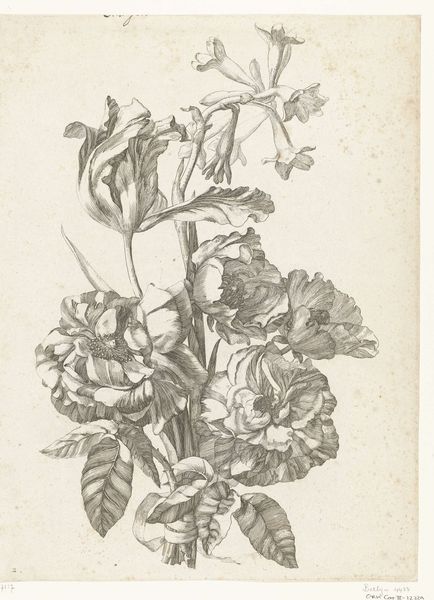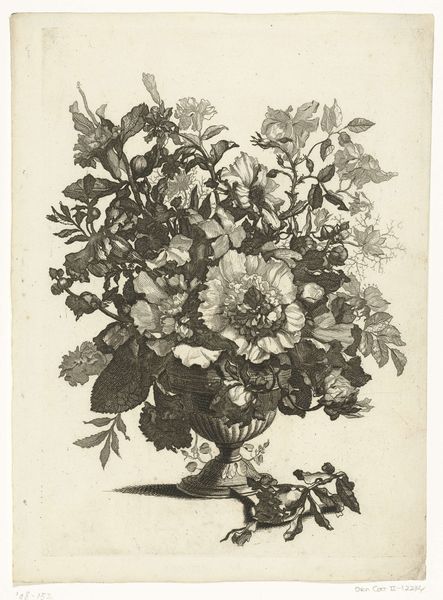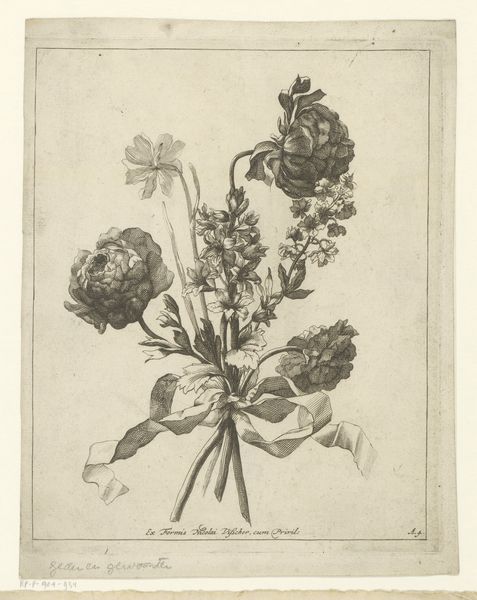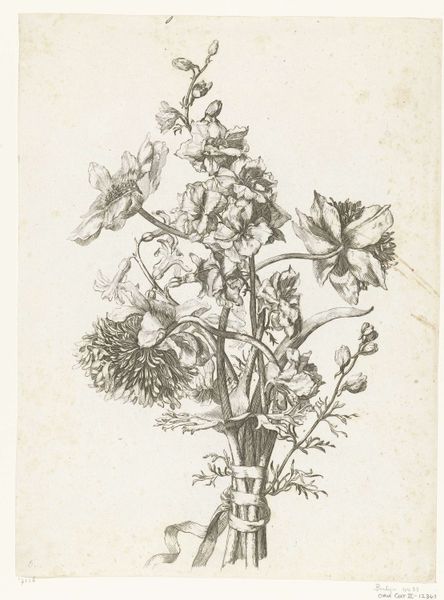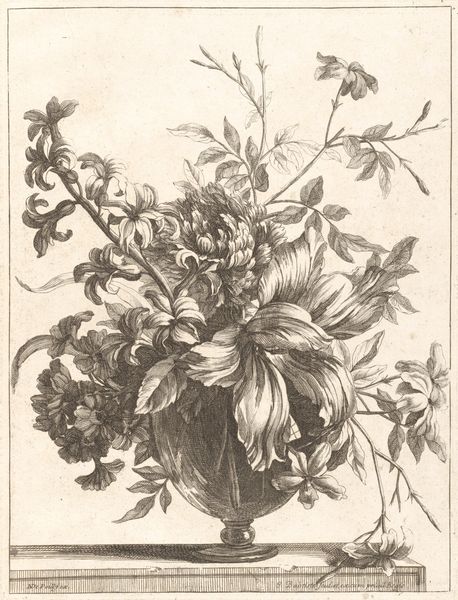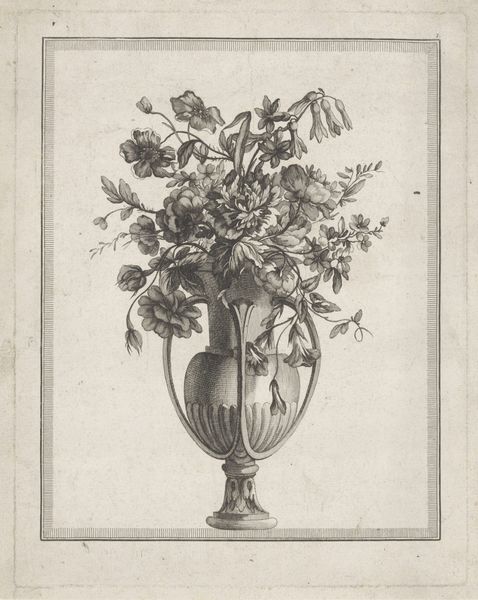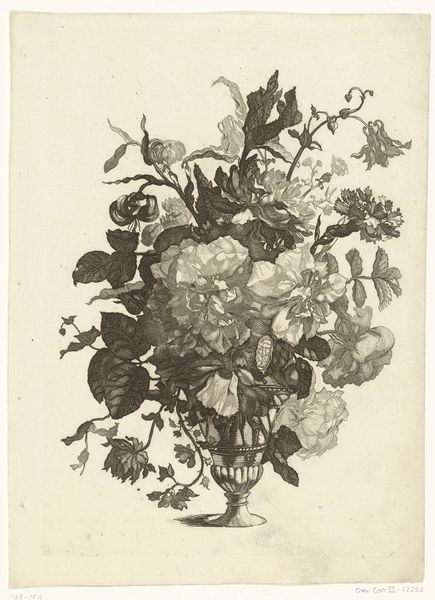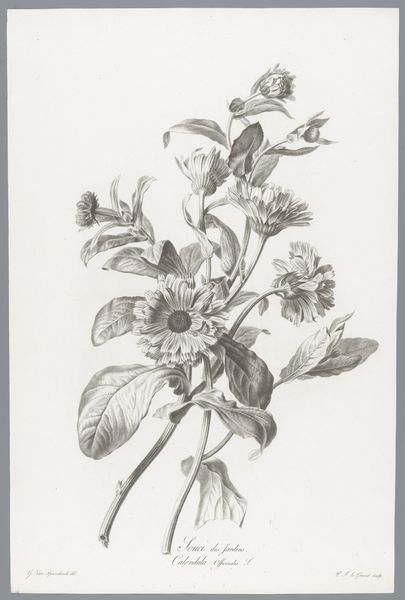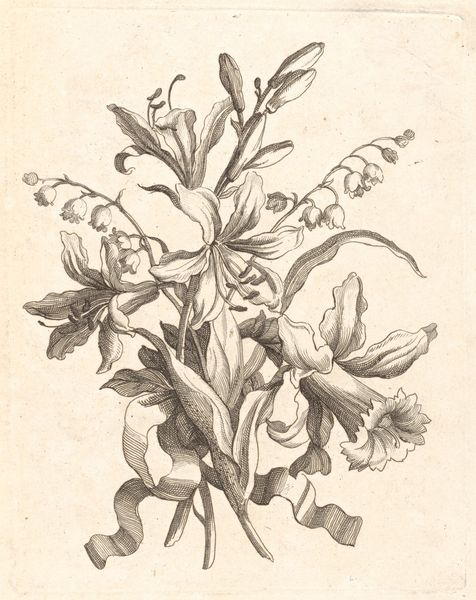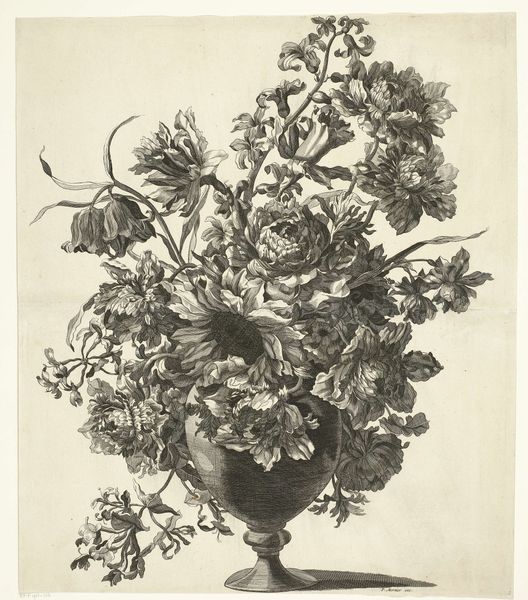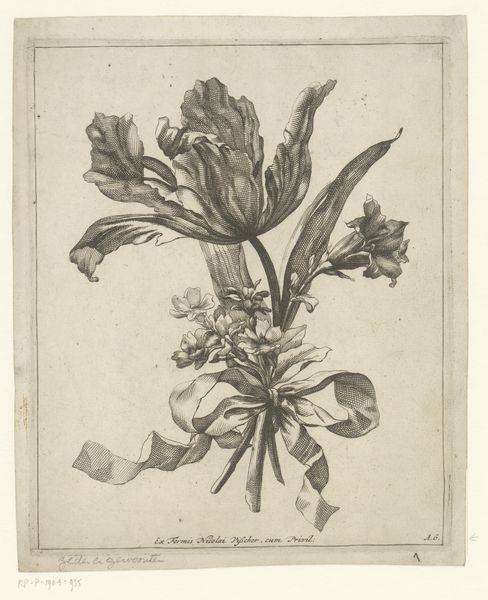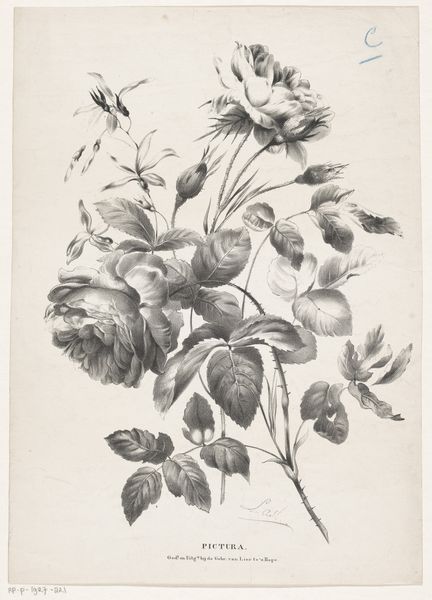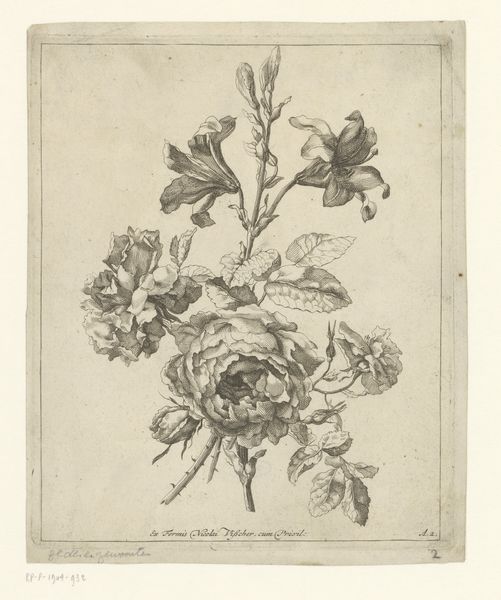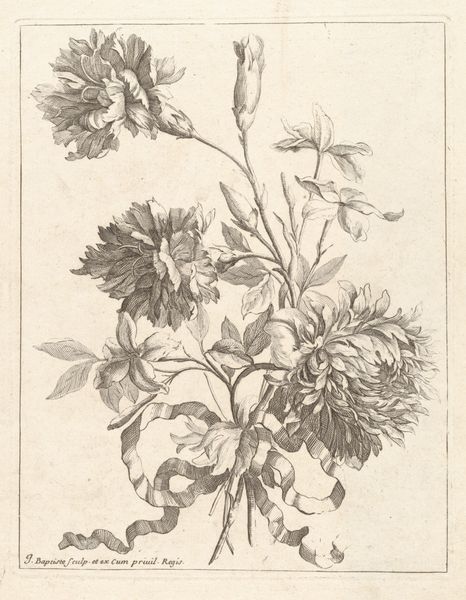
Boeket met een narcis, sinasappelbloesem of jasmijn en een iris c. 1670
0:00
0:00
drawing, print, engraving
#
drawing
#
baroque
#
pen drawing
# print
#
old engraving style
#
engraving
#
botanical art
Dimensions: height 300 mm, width 222 mm
Copyright: Rijks Museum: Open Domain
Curator: Here at the Rijksmuseum, we have Jacques Bailly the First’s “Boeket met een narcis, sinasappelbloesem of jasmijn en een iris,” an engraving from around 1670. Editor: It’s incredibly detailed. The textures are so finely rendered, especially on the iris. It's got this kind of delicate, almost scientific feel to it. Curator: Yes, well, botanical illustration had become increasingly popular through publications accessible to a growing middle class, keen to know nature but also consume imagery as a demonstration of their increasing awareness. This print would have met an eager audience. Editor: Exactly! But let's talk about the labor here. Consider the sheer skill involved in creating this level of detail using engraving. The physical effort! We can see the control Bailly had over the tools, transforming base metal into a matrix to disseminate images to a broad audience. Curator: Absolutely, the print medium itself democratized access to imagery previously available mostly through painting for the aristocracy. Furthermore, Bailly came from a family workshop—so that shaped how these images were made and consumed at the time. Editor: I’m curious about the choices he made, like with the light. It almost feels… staged, rather than naturally observed. The shadows are so dramatic for flowers. Curator: True, but it was designed as an object for display. An object which gave its owners access to flowers year-round through a reproducible image that also signaled good taste. It brings an entire network of workshops and aesthetic judgments to your fingertips. Editor: Ultimately, for me, it comes back to process. How the artist transforms metal, pressure, and ink to generate something so delicate. I like the interplay of industry and aesthetics, as it makes this print much more interesting than any botanical illustration. Curator: It shows the expanding art markets of the Dutch Golden Age; consumers could display flowers perpetually, despite seasonality or expense. It serves a very particular purpose. Editor: Precisely. The context informs so much. Curator: Thank you. Editor: Thank you.
Comments
No comments
Be the first to comment and join the conversation on the ultimate creative platform.
